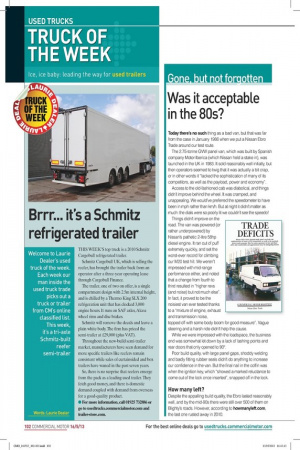Was it acceptable in the 80s?
Page 37

If you've noticed an error in this article please click here to report it so we can fix it.
Today there's no such thing as a bad van, but that was far from the case in January 1986 when we put a Nissan Ebro Trade around our test route.
The 2.75-tonne GVW panel van, which was built by Spanish company Motor-lberica (which Nissan held a stake in), was launched in the UK in 1983. It sold reasonably well initially, but then operators seemed to twig that it was actually a bit crap, or in other words it "lacked the sophistication of many of its competitors, as well as the payload, power and economy".
Access to the old-fashioned cab was diabolical, and things didn't improve behind the wheel. It was cramped, and unappealing. We would've preferred the speedometer to have been in mph rather than km/h. But at night it didn't matter as much: the dials were so poorly lit we couldn't see the speedo!
While we were impressed with the loadspace, the business end was somewhat let down by a lack of lashing points and rear doors that only opened to 900.
Poor build quality, with large panel gaps, shoddy welding and badly fitting rubber seals didn't do anything to increase our confidence in the van. But the final nail in the coffin was when the ignition key, which "showed a marked reluctance to come out of the lock once inserted", snapped off in the lock.
How many left?
Despite the appalling build quality, the Ebro lasted reasonably well, and by the mid-90s there were still over 500 of them on Blighty's roads. However, according to howmanyleft.com, the last one rusted away in 2010.









































